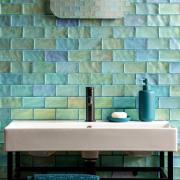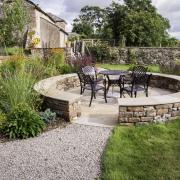Wood is my all time, number one, favourite material. I am always drawn to wooden objects, and it is my first preference to include when designing spaces for my clients. It is not hard to see why this wonderful natural resource is a perennial favourite of so many people; it is versatile, sustainable and connects directly with our senses.
Some you might know and some you probably won’t, but we love wood for good reason. As interest in biophilic design grows there are more studies and research projects delving into our responses to wood that uncover why it can be good for many levels of our overall wellbeing. Its benefits include:
· Improved indoor air quality: I’ve written before about how toxic indoor air quality can be and wood certainly helps bring a positive balance to your space. Wood can absorb and release moisture. In doing so, it helps to regulate humidity levels indoors, leading to improved air quality and reducing the risks of respiratory issues and allergies.
· Reduce stress and anxiety: the presence of wood in interior design has been shown to produce a calming effect on our mind. Not only can it create a sense of warmth and comfort but studies also show that it helps to reduce stress levels and lower blood pressure helping to promote an overall sense of wellbeing.
· Natural insulation: wood is an excellent natural insulator. By helping to maintain a comfortable temperature indoors, it helps reduce the need for as much artificial heating (or air conditioning systems in some countries) and helps maintain a stable environmental temperature.
· Improves cognitive function and creativity: a year-long Austrian study observed 36 high school students, aged 13-15, who attended either fully wooden furnished classrooms or commonly equipped classrooms with plastic equipment and plasterboard walls.
By the end of the year, it was determined that those students who were taught in wood-based environments daily had significantly lower stress levels, lower blood pressure and heart rates as well as improved test results, increased productivity and creativity when compared to the opposite group of teenagers who were taught in classrooms made up of plasterboard and plastics.
Wood is a sensory experience. It engages multiple senses and provides a deeply satisfying and enriching experience, contributing to its appeal and desirability.
Haptic invitation: wood has a unique texture and grain pattern that provides a rich tactile experience. The variations in grain and surface make touching it a sensory-rich activity that the brain finds deeply satisfying.
This natural warmth can be comforting and pleasant, making wooden objects and surfaces more inviting to interact with. The act of touching wood can be emotionally satisfying because it engages our senses in a natural and harmonious way.
The aesthetic beauty combined with the physical experience of touching wood can enhance our appreciation and enjoyment of our surroundings.
Connection to nature: touching real wood also creates a direct connection to nature, grounding us and providing a sense of tranquility. This connection can evoke feelings of calm and wellbeing, as it brings a piece of the natural world into our daily lives.
Thermal comfort: wood tends to feel warm to the touch, unlike many synthetic materials that can feel cold or uninviting. This natural warmth is comforting and can make wooden surfaces more inviting to interact with.
Authenticity: real wood often conveys a sense of authenticity and quality that synthetic materials lack. The unique feel of wood, with its natural imperfections and variations, can be reassuring and evoke a sense of craftsmanship and durability.
Our olfactory system (aka sense of smell) is one of our most powerful and evocative senses. Smell can instantly transport us to a time and place when our memories are triggered through fragrance.
The smell of wood can have a positive impact on both mental and physical health, contributing to a more pleasant and healthy living or working environment.
· Stress reduction: the natural aroma of wood, especially certain types like cedar or pine, has been shown to have a calming effect on the mind and body, helping to reduce stress levels and promote relaxation.
· Improved mood: the pleasant and earthy scent of wood can elevate mood and enhance overall wellbeing. The connection to nature that the smell evokes can create a sense of comfort and happiness.
· Enhanced cognitive function: some studies suggest that the scent of wood can improve concentration and cognitive performance. The natural aroma can create a more conducive environment for focus and productivity.
· Air quality improvement: certain types of wood, such as cedar and pine, emit natural oils that can help purify the air by reducing airborne bacteria and allergens. This can lead to a healthier indoor environment.
· Aromatherapy benefits: the essential oils found in wood, such as cedarwood oil, are often used in aromatherapy for their therapeutic properties. These oils can promote better sleep, reduce anxiety and alleviate symptoms of respiratory issues.
The visual appeal of wood can enhance cognitive and emotional wellbeing, making environments that incorporate wood more enjoyable and satisfying spaces to be in.
The brain views the collinear lines of wood grain as soothing and natural. One possible explanation for our biophilic response to wood is that the brain engages in semantic processing, making a series of associations.
Essentially, the brain subconsciously links wood to trees, trees to life and nature, thereby triggering a positive biophilic response.
Natural aesthetics: wood has a natural, warm and organic appearance that is visually pleasing. The unique grain patterns, colours and textures provide a sense of variety and beauty that the brain finds attractive and stimulating.
Texture and pattern recognition: the brain is naturally drawn to the intricate patterns and textures found in wood. These features engage the brain's visual processing centres, providing a sense of interest and satisfaction through pattern recognition and sensory stimulation. The brain views the collinear lines of wood grain as soothing and natural.

Warmth and comfort: the brain associates wooden surfaces with cosy and inviting environments, which can create a sense of security and contentment.
In our DNA: throughout our history, wood has been a fundamental material in human survival, habitation and craftsmanship. Our species at one time was deeply connected to landscapes that featured trees.
Using wood responsibly and adhering to sustainable forestry practices ensures that it remains a viable and environmentally friendly material for the future.
Recent studies show mass timber construction could help even further and is gaining attention in the architectural world due to its potential to significantly reduce the carbon footprint of buildings.
When sourced from sustainably managed forests and produced locally, these building components can store more carbon than is emitted during their production. Consequently, the mass timber portions of a building could help offset the carbon footprint of other materials used in construction.
· Renewable resource: wood is a renewable resource, it can be replanted and regrown over time. Sustainable forestry practices ensure that for every tree harvested, new trees are planted, maintaining the forest ecosystem.
· Carbon sequestration: trees absorb carbon dioxide from the atmosphere as they grow, storing carbon within their biomass. This process helps mitigate climate change by reducing the amount of CO2 in the atmosphere.
· Low energy production: the production and processing of wood requires significantly less energy compared to other building materials like steel and concrete. This results in lower greenhouse gas emissions and a smaller carbon footprint during the manufacturing process.
· Biodegradable and recyclable: wood is biodegradable, it can decompose naturally without harming the environment. Additionally, wood products can often be recycled or repurposed, extending their lifecycle and reducing waste.
· Supports biodiversity: sustainable forestry practices help preserve biodiversity by maintaining diverse forest ecosystems, providing habitats for various plant and animal species and contributing to ecological balance and resilience.
Using wood in the home has never been more popular or desirable. As such, there are now many small businesses, designers and artisans championing the use of wood in all its natural beauty.
Whether you choose to decorate with wood or you are looking for the perfect piece of furniture or accessory, there are some exceptionally talented wood champions based in the UK:

Marianna Popwell, aka @the_wooden_hill on Instagram and author of biophilic design book At Home with Nature, knows extremely well the benefit of real wood in the home.
In the process of renovating her Cornish house, Marianna has installed wood paneling in her orangery to profound effect. The rich warm tones of the wood combined with natural stone and lashings of natural light have created a space built with simple, honest, natural materials that is rich in texture and variation.
More than a decorating trend, wood paneling has been a feature in homes across the centuries and continents. From timber cladding to decorative beading, slat walls to cork, wood makes a warm and inviting way to decorate your home.
Based in Yorkshire, Naturewall is the UK’s leading wall paneling expert. Its innovative products are quick and easy to install in any space with a variety of design style to suit. Their reclaimed pine planks are 100 per cent wood, naturally weathered and bring an authentic feel to a space.

Some woods, such as oak and pine, possess natural, antibacterial properties. As such they can inhibit the growth of bacteria making wooden surfaces a healthier choice over synthetic materials. Real wood makes an excellent choice, therefore, in the kitchen, whether for work surfaces or kitchen items.

Paul Bainbridge, from Forge & Forest, based in Hesket Newmarket, has created a new range of chopping boards. Paul sources local Cumbrian oak from which to craft his many creations. With the live edge detail, these chopping boards make a stylish and practical addition to any kitchen.
Penrith based The Bespoke Home brings an artistic eye to furniture-making by blending wood to create unique artworks or decorative details on handmade furniture. Being mindful of using as much of the wood as possible and minimising waste, owner Jacqueline Duffield also has a signature collection of pieces made from using the offcuts of wood.

Inspired by the fells and local landscapes these unique pieces, such as these bedside tables, add a new level of interesting texture and natural beauty to any space.
Embracing more wood into your home is a wonderful way to connect to nature and begin to reap the benefits of living with this beautiful natural material.
Follow Sharon on Instagram @a_story_of_home



























